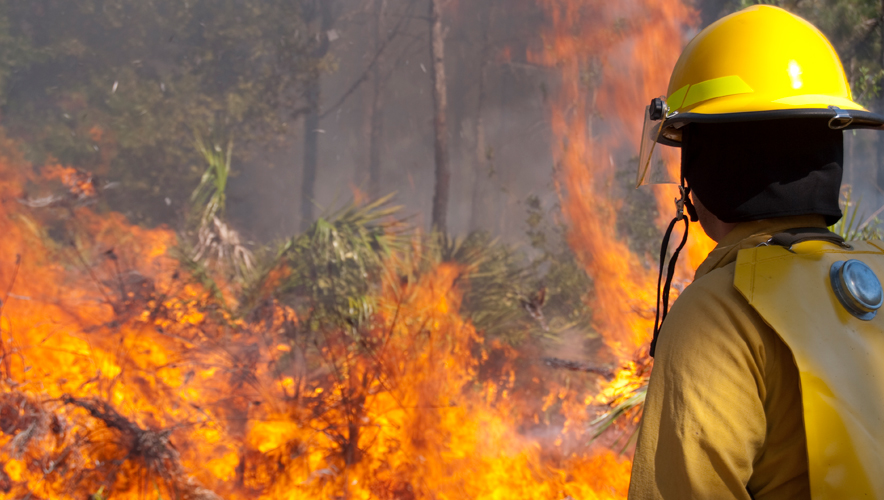Monthlong New Mexico Wildfire Signals a Rough Fire Season Ahead
It’s a forecast for disaster—strong winds, high temperatures, and low humidity were on the horizon for New Mexico, threatening to stoke the largest fire burning in the United States. The weather creates an “exceptionally dangerous and likely historic stretch of critical to extreme fire weather conditions” for the next several days, the National Weather Service said.
The blaze is more than a month old now, and it has burned more than 269 square miles, according to the Associated Press (AP). Thousands of residents have evacuated the area, and firefighters’ efforts have been hampered by unexpectedly strong winds at night—undercutting their ideal firefighting time in cooler evenings. The winds were so strong—up to 60 mph—that firefighters had to stop using helicopters and planes in their efforts.
Already in 2022, New Mexico has seen more fire damage than in all of 2021. So far, 199 fires have burned 187,477 acres in the U.S. state, and officials have warned of a long and dangerous fire season ahead, The Washington Post reported.
But New Mexico isn’t the only area of the United States at high risk for fire.
“Nationwide, close to 2,000 square miles (5,180 square kilometers) have burned so far this year, with 2018 being the last time this much fire had been reported at this point," according to the National Interagency Fire Center's analysis reviewed by the AP. "And predictions for the rest of the spring do not bode well for the West, where long-term drought and warmer temperatures brought on by climate change have combined to worsen the threat of wildfire.”
Strong winds continued Sunday, helping spread the second-largest wildfire on record in New Mexico farther into small farming communities in the state’s mountain valleys, as crews expect many more days of severe conditions. https://t.co/kRm0pOCDqd
— The Washington Post (@washingtonpost) May 9, 2022
AccuWeather projects that the United States faces 8.1 to 8.3 million acres being burned this wildfire season, and the drought conditions in California make this even more serious. In addition, people are ready to go camping, but 85 percent of wildfires in the U.S. West are manmade, with the rest due to weather conditions. With the addition of dry brush, limited rain, and high winds, a campfire can quickly spread.
“California continues to experience longer wildfire seasons as a direct result of climate change,” according to the California Department of Forestry and Fire Protection. The department expects that January’s dry winter will continue into the spring with little precipitation, leaving most of the U.S. state in moderate to extreme drought conditions as summer begins.
“These continued dry conditions with above normal temperatures through spring will leave fuel moisture levels lower than normal, increasing the potential for wildland fire activity,” the department explained.
Meanwhile, a heatwave shattered records in Texas during the weekend, with temperatures reaching as high as 112 degrees Fahrenheit (44.4 degrees Celsius). This week, record-high temperatures near 90 degrees Fahrenheit (32.2 degrees Celsius) could extend as far north as the Great Lakes. The heat also intensifies the critical-to-extreme fire threat to New Mexico and West Texas, the Post reported.
The latest UN report on climate change noted that at least 3.3 billion people’s daily lives are “highly vulnerable” to climate change, and people are 15 times more likely to die from extreme weather than in years past. https://t.co/rJUj5XrOZd
— Security Management (@SecMgmtMag) March 2, 2022
Shifting patterns in wildfire activity have forced organizations to reevaluate how their supply chains run and where they can develop redundancies or backup plans.
And those shifting patterns are not restricted to the United States. A report from the Intergovernmental Panel on Climate Change found that if global warming is halted at 1.5 degrees Celsius (34.7 degrees Fahrenheit) over pre-industrial levels, there could be a 40 to 54 percent increase in burnt area across Mediterranean Europe alone. If temperatures climb 2 degrees Celsius (35.6 degrees Fahrenheit) instead, that increase jumps to 62 to 87 percent.
